► Revised Mercedes EQB looks more like the EQS
► New 70.5kWh battery has increased range, too
► And you can tow stuff with it now, as well!
Mercedes has launched a refreshed version of the EQB. It now has a longer maximum range, a new front end, a little more technology and – drum roll, please – an optional towbar! Phwoar. Jokes aside, we think the EQB is one of the best electric SUVs on sale due to its combination of cabin space, ride comfort and seven-seat capacity. We’re keen to see whether the changes have improved the car.
On paper, the revisions look encouraging. The change we’re most interested in is Merc’s new, entry level EQB 250+ model. It features a larger 70.5kWh battery pack and a more efficient single-motor powertrain, which has increased the SUV’s maximum official range from 260 to 333 miles.
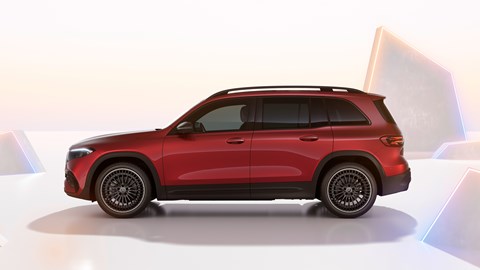
But this extra range can’t be attributed to the larger battery pack alone. Mercedes has also made some aerodynamic tweaks to the EQB’s bodywork to help it cut through the air more cleanly and consume its kilowatts more efficiently. The most drastic change is the car’s new front end which uses the same sleek design language as the larger EQE and EQS saloons.
Mercedes teamed the EQB’s new face with a fresh set of low rolling resistance tyres and a new range monitoring function that can recommend the ideal speed required to eke the maximum number of miles from the battery. What’s more, because these changes have been deployed across the EQB’s line-up, maximum range for the less efficient dual motor 66.5kWh model has also risen to 278 miles.
But what about the new towbar?
We’re glad you asked. The Mercedes EQB’s new, optional towbar allows the single-motor model to haul up to 1400kg, which is just enough for a four-berth caravan. Dual motor models can tow up to 1700kg and both versions of the car can accept a towbar-mounted bicycle carrier. Plus, the towbar can retract into the rear bumper when it isn’t needed. How lifestyle-y is that?
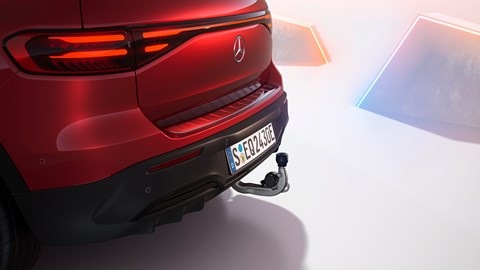
Mercedes had to strengthen the EQB’s rear end so it could stand up to the punishment of towing. The company also upgraded the car’s stability control with a new trailer stabilisation setting, which promises to help prevent fishtailing by automatically counter steering the car.
What else has changed about the EQB?
Lots of small things. There are two new paint finishes on the options list, along with four new alloy wheel designs ranging between 18 and 20 inches in diameter. Merc has updated its safety kit, too – the EQB’s parking sensors are a little more powerful than before and the car’s active lane-keeping system now operates using steering intervention rather than the car’s stability control, which Mercedes says is more comfortable for the occupants.
Inside, Mercedes has fitted its latest EV steering wheel and updated the EQB’s infotainment system with some new software that mirrors the menu design of the more expensive EQE and EQS. You get a few more features to play with, such as a new button on the touchscreen that unlocks the charging flap. Buyers can also now specify Merc’s posh open-pore wood trim as an optional extra.
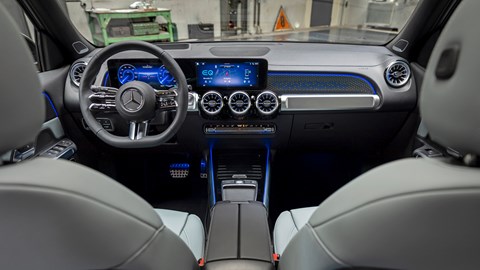
Mercedes has improved the EQB’s virtual assistant, too. Apparently, it can now learn the driver’s speech patterns more effectively and it can remember common interior settings and frequent driving routes. It can also recommend settings for the infotainment system, climate control and vehicle functions to complement your driving route.
Mercedes has also upgraded the EQB’s Burmester sound system with Dolby Atmos surround sound, which the company says has improved sound quality. Buyers can also choose from four new sound experiences, designed to fill the aural void left by the missing petrol engine. Two are available as standard and two are available for purchase via the infotainment system on the Mercedes store.
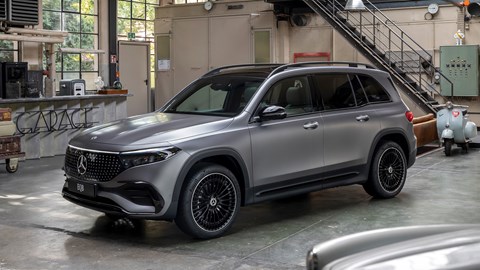
One thing that hasn’t change is the EQB’s seating layout. Mercedes’ engineers aren’t miracle workers – and they’d already pinched the maximum number of inches they could when squeezing seven seats into the original car’s relatively small platform. As such, Mercedes recommends no one over 5’4” uses the rearmost seats. Still, the third seating row adds a welcome dash of versatility, especially because you fix a pair of child seats back there.
Boot space for the five-seat model stands at 495 litres with the rear seat in place and 1,710 litres with the bench folded flat. Seven seat models can carry 465 litres with the third seating row stowed and 1,620 litres with all the rear seats folded flat.
Talk me through the EQB’s powertrains
There are three to choose from. The EQB 250+ has a single electric motor and a 70.5kWh battery pack, which gives the SUV an output of 188bhp and 284lb ft of torque. Mercedes hasn’t yet confirmed any performance specs for the powertrain.
Above that, there’s the EQB 300 4MATIC. It has a smaller 66.5kWh battery and two electric motors that churn out a combined output of 225bhp and 288lb ft of torque. Mercedes says that’s enough for a 0–62mph time of eight seconds dead and a top speed of 99mph.
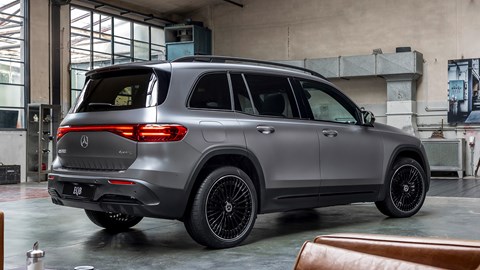
The fastest option in the EQB range is the 350 4MATIC. It uses the same battery pack as the 300, but its motors produce 288bhp and 384lb ft of torque. That’s enough to trim the SUV’s 0–62mph time down to 6.2 seconds, although top speed remains the same at 99mph.
Every version of the EQB supports 100kW DC rapid charging as standard. When connected to a compatible charging point, the technology can charge both battery packs from 10 to 80% capacity in around half an hour. It takes between nine and 10 hours to completely recharge the batteries when connected to a slower 7.4kW AC wallbox charger.
When can I get one?
The updated Mercedes EQB will be available to order in Autumn 2023, with the first cars set to arrive in early 2024. Mercedes hasn’t yet told us how much the updated car will cost but, considering the number of changes, we’re expecting it to be more than the outgoing car.
For context, prices for the outgoing version of the mid-range EQB 300 4MATIC start from £55,310 in the UK (Mercedes didn’t bring the previous version of the cheaper 250 model to Blighty). We expect that figure will increase to around £57,000 to compensate for the upgrades.
Luke Wilkinson is a Senior Staff Writer for the Bauer Automotive Hub. He spends his time writing news, reviews and features for CAR magazine and its sister site, Parkers.